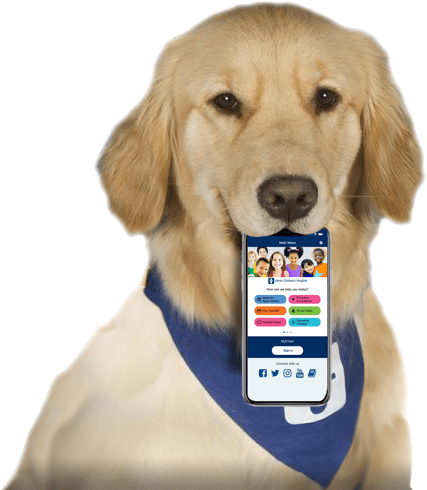Acute Lymphoblastic Leukemia (ALL)
What Is Leukemia?
Leukemia is a cancer that mostly affects white blood cells. White blood cells (also called leukocytes) fight infections.
Bone marrow is a spongy material inside the bones that makes white blood cells, red blood cells, and platelets. With leukemia (loo-KEE-mee-uh), the bone marrow makes white blood cells that don’t work. These abnormal cells can’t protect the body from germs. They crowd the bone marrow, enter the bloodstream, and can spread to other parts of the body, like the lymph nodes, brain, or liver.
Leukemia is the most common type of cancer in children. It can be acute (fast-growing) or chronic (slow growing). Most kids and teens treated for leukemia are cured of the disease.
What Is Acute Lymphoblastic Leukemia?
Acute lymphoblastic leukemia (ALL) happens when the body makes too many of a white blood cell called a lymphocyte. This is the most common type of leukemia in children. ALL is also called acute lymphocytic leukemia and acute lymphoid leukemia.
ALL can affect different types of lymphocytes called B-cells or T-cells. Doctors label the type of ALL based on which cells are affected. Most kids with ALL have the B-cell subtype.
Acute lymphoblastic leukemia develops and gets worse quickly, so early diagnosis is important. Most kids are cured with treatment.
What Are the Signs & Symptoms of Acute Lymphoblastic Leukemia?
Kids with ALL may get anemia, which is when the body has too few red blood cells. This happens when bone marrow stops making the usual amount of red blood cells.
Kids with anemia may:
- look pale
- feel very tired or weak
- get short of breath while playing
When they don’t have enough platelets (PLATE-lits), kids with leukemia may bruise easily, get nosebleeds, or bleed for a long time after even a minor cut.
Other symptoms of leukemia can include:
- pain in the bones or joints, sometimes causing a limp
- swollen lymph nodes (swollen glands) in the neck, groin, or elsewhere
- poor appetite and weight loss
- fevers
- belly pain
Because their white blood cells can't fight infections, kids with leukemia are more likely to get viral or bacterial infections.
Sometimes leukemia can spread, or metastasize (meh-TASS-tuh-size). If it spreads to the brain, symptoms may include headaches, seizures, balance problems, or vision problems. If it spreads to the lymph nodes in the chest, symptoms can include breathing problems and chest pain.
What Causes Acute Lymphoblastic Leukemia?
Doctors don't know exactly what causes leukemia. But some things can make kids more likely to get it, such as:
- having a sibling with a history of leukemia
- earlier radiation therapy or chemotherapy for other types of cancer
- taking medicines to suppress the immune system after an organ transplant
- genetic conditions such as:
- Li-Fraumeni syndrome
- Down syndrome
- neurofibromatosis
- ataxia telangectasia
- Fanconi anemia
- having a non-inherited condition like myelodysplasia syndrome (a kind of pre-leukemia that stops blood cells from growing normally)
How Is Acute Lymphoblastic Leukemia Diagnosed?
Doctors use special tests to check for leukemia. These include:
- Blood tests. Tests such as a complete blood count, liver function and kidney function panels, and blood chemistry tests can give important information about the number of normal blood cells in the body and how well the organs are working. The shapes and sizes of the blood cells are checked with a microscope.
- Imaging studies. These may include an X-ray, CT scan, MRI, or ultrasound. Doctors use these to rule out other causes of symptoms, or look for a mass of leukemia cells in the chest that can affect breathing or blood circulation.
- Bone marrow aspiration and biopsy. For this procedure, a child gets medicine to sleep and be comfortable. The doctor then puts a needle into a large bone, usually the hip, and removes a small amount of bone marrow. A lab does these tests on the bone marrow sample:
- Flow cytometry tests. Doctors carefully look at the cancer cells and figure out the type and subtype of the leukemia. This is important because treatment varies among different types of leukemia.
- Genetic tests. By looking carefully at the blood or bone marrow, doctors check for changes in the genes. This can help doctors figure out the best treatment.
- Tissue typing or HLA (human leukocyte antigen) typing. If a child needs a stem cell transplant (sometimes called a bone marrow transplant), this test helps find a suitable stem cell donor. It compares the proteins on the surface of the child's blood cells with the proteins on a potential donor's cells. The more HLA markers a child and donor share, the greater the chances that a transplant will go well.
- Spinal tap (lumbar puncture). The doctor uses a hollow needle to remove a small amount of cerebrospinal fluid (the fluid surrounding the brain and spinal cord). The fluid is checked for cancer cells. This helps doctors plan treatment.
How Is Acute Lymphoblastic Leukemia Treated?
Chemotherapy
Most kids with ALL will get chemotherapy. These are special drugs that kill cancer cells. Which drugs a child gets and in what combination depends on the subtype of ALL and how fast-moving the disease is. How cancer cells respond to the first treatment helps doctors decide how to choose the next type of chemo.
Different types of chemo can be given:
- into a vein (IV)
- as an injection into a muscle
- by mouth in pill form
- with a spinal tap right into the cerebrospinal fluid
The treatment goal is remission, which is when tests don't find any cancer cells in the body. Then, maintenance chemotherapy keeps the child in remission and prevents the cancer from coming back. Kids get maintenance chemo for 2 to 3 years.
Stem Cell Transplants
Some kids who have a fast-growing type of ALL might need a stem cell transplant (sometimes called a bone marrow transplant). This treatment involves:
- killing cancer cells, normal bone marrow, and immune system cells with high-dose chemotherapy and/or radiation
- putting healthy donor stem cells back into the body
- rebuilding a healthy blood supply and immune system with the new stem cells
Other treatments may include:
- radiation therapy: high-energy X-rays that kill cancer cells
- targeted therapy: specific drugs that find and attack cancer cells without hurting normal cells
- immunotherapy: medicine that uses the child’s own immune system to get rid of cancer cells
Clinical Trials
Clinical trials are research studies that offer promising new treatments not yet available to the public. Doctors will decide if a child is a good candidate for a clinical trial.
What Else Should I Know?
Having a child being treated for cancer can feel overwhelming for any family. But you're not alone. To find support, talk to anyone on your child’s care team or a hospital social worker. Many resources are available to help you get through this difficult time.
You also can find information and support online at:
Reviewed by: Larissa Hirsch, MD
Date Reviewed: Oct 11, 2021
















